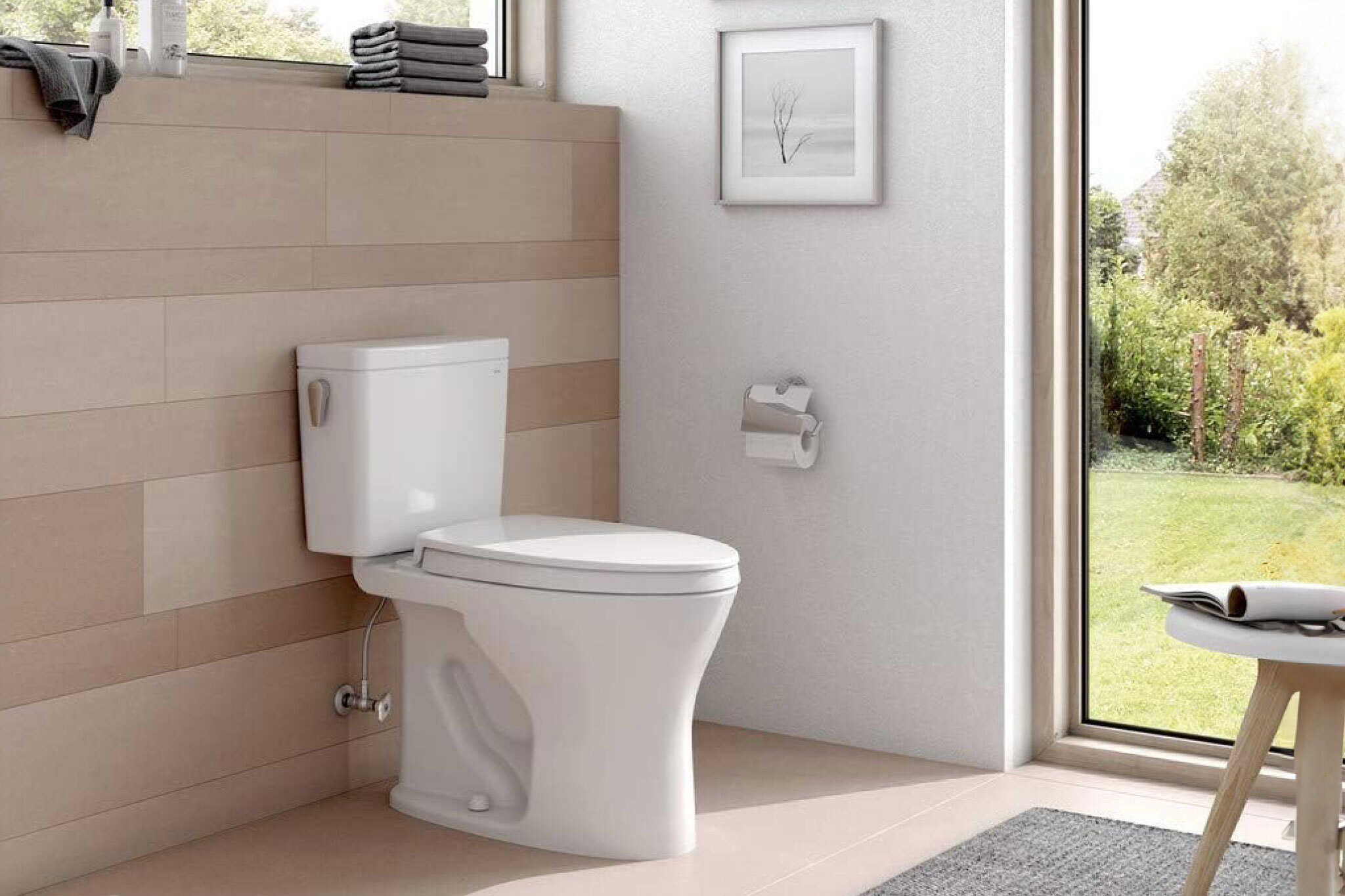How to Plan an Elongated Toilet Installation
If you are beginning a bathroom refresh or simply replacing an old toilet with a new one, it’s a great idea to plan the project carefully. Installing plumbing fixtures can be a frustrating home improvement, especially if existing pipes, wires or framing must be altered.
One of the most popular home improvement projects among do-it-yourselfers is replacing old, outdated toilets, sinks, showers and bathtubs. Generally, manufacturers design new fixtures to fit the same location as the old fixture, but not always.
Bathroom remodeling projects tend to add and/or remove existing walls, which can be a problem if the wall contains plumbing pipes, HVAC vents, or wiring. Without proper planning, a simple replacement project can cause more problems than it solves.
Here we will discuss the most common of these bathroom projects, which is replacing an old-style toilet with a modern elongated toilet. We’ll discuss how to perform a preliminary inspection, take the correct measurements, and how to determine which adjustments to the plumbing or framing may be required.
What is an Elongated Toilet?
An elongated toilet is designed very similar to a standard toilet, except an elongated toilet extends further from the wall. Elongated toilets provide an elegant shape that stands out against the short, straight visual lines found in most bathrooms.
The best elongated toilet designers, like Toto USA, include adjustable pipe connections to meet varying pipe locations. This not only makes the job significantly easier, but prevents the need for additional adapters.
The Drake Two-Piece elongated toilet, built by Toto USA, is a great example of form meeting function. Drake elongated toilets have a unique G-Max trapway (where many clogs occur) that virtually eliminates clogging, while using only 1.6 gallons per flush. The unique glazing on these toilets helps clean the bowl as well, without needing harsh chemicals.
Drake elongated toilets can be customized with skirting, making them ideal for those DIYers with uneven floors. Unlike most elongated toilet designs, Drake elongated toilets are also available with a SoftClose seat and a wide range of hardware styles, colors and finishes.
Elongated toilets are considered an upgrade from standard toilet designs, so they tend to have the most features and color options available. Even the hardware, like the flush valve, is available in a range of finishes and colors. In addition, elongated toilets tend to be more water-efficient, comfortable and durable than their standard cousins.
Does an Elongated Toilet Fit the Same Plumbing as a Standard Toilet?
Where existing plumbing is concerned, an elongated toilet will fit in the same location as the original in most situations. Plumbing codes usually require that the drain pipe the toilet sits over be a standard offset from the wall behind it. Although an elongated toilet extends further into the bathroom than a standard one, the connection for the pipe is the same for both.
Building codes also require that toilets have a standard clear space around them for easy access. This means the bathtub, shower, vanity and other objects must maintain a minimum distance from the toilet. If your bathroom has limited space, make sure you’re aware of and comply with these minimum clearances.
What Changes Will I Need to Make to the Plumbing or Framing?
Framing
Generally, you won’t have to change the floor framing, or finished floor, to replace an old toilet with an elongated version. However, if you relocate any walls or fixtures within the bathroom you may have to relocate the toilet flange, which is where the toilet attaches to the drain pipe on the floor.
Pipes: Supply Lines and Drain
Which side of the tank connects to the supply line? If you select an elongated toilet with connections on the correct side you can avoid long supply lines from the supply valve. Does the supply line extend from the floor or the wall? Take a few measurements of these locations and share them with a pro when selecting your new toilet to make installation easier.
Hardware
The best manufacturers provide additional hardware options for maximum design control. You can select from a wide range of colors and textures and even choose whether the toilet flush handle is on the left or right. Using these options to your advantage can make your bathroom the talk of your next dinner party.
Finished Floor
Be aware that the type of finished floor your bathroom has can affect how the bowl sits on the toilet flange. Thick materials, such as ceramic tiles, will lengthen the distance between the toilet bowl and the flange. You may have to add a spacer to the flange if your new flooring will add more than ⅛” or so to maintain a good seal.
HVAC Register
Be aware some bathrooms have floor HVAC registers, instead of ceiling or wall registers. Check with your local building codes office to determine the minimum distance you’ll need to maintain. Elongated toilets are a little longer than standard toilets, so make sure you have adequate distance.
Electrical Outlet
If there is a nearby jetted bathtub, the wall behind a toilet may contain a ground fault circuit interrupter (GFCI) outlet. Before selecting your new elongated toilet, ensure the widest part, usually the tank, will not infringe on the outlet. The outlet is there to disconnect the power if the tub becomes accidentally electrified and must remain accessible.
ADA Compliance
We should note that ADA-compliant residential bathrooms have different rules than standard building codes. If you plan to make your bathroom ADA-compliant, adding an elongated toilet is a good place to start. However, you’ll also need grab bars in certain locations, along with wide doors and easy-to-reach light switches.
Get Started with Coburn’s
Whether you’re building a new home or overhauling an older one, Coburn’s is ready to help you find the perfect toilet and other fixtures for your bathroom and living areas. Drop by your nearest Coburn’s Kitchen & Bath Showroom location with your questions and ideas. We’d love to hear from you.
